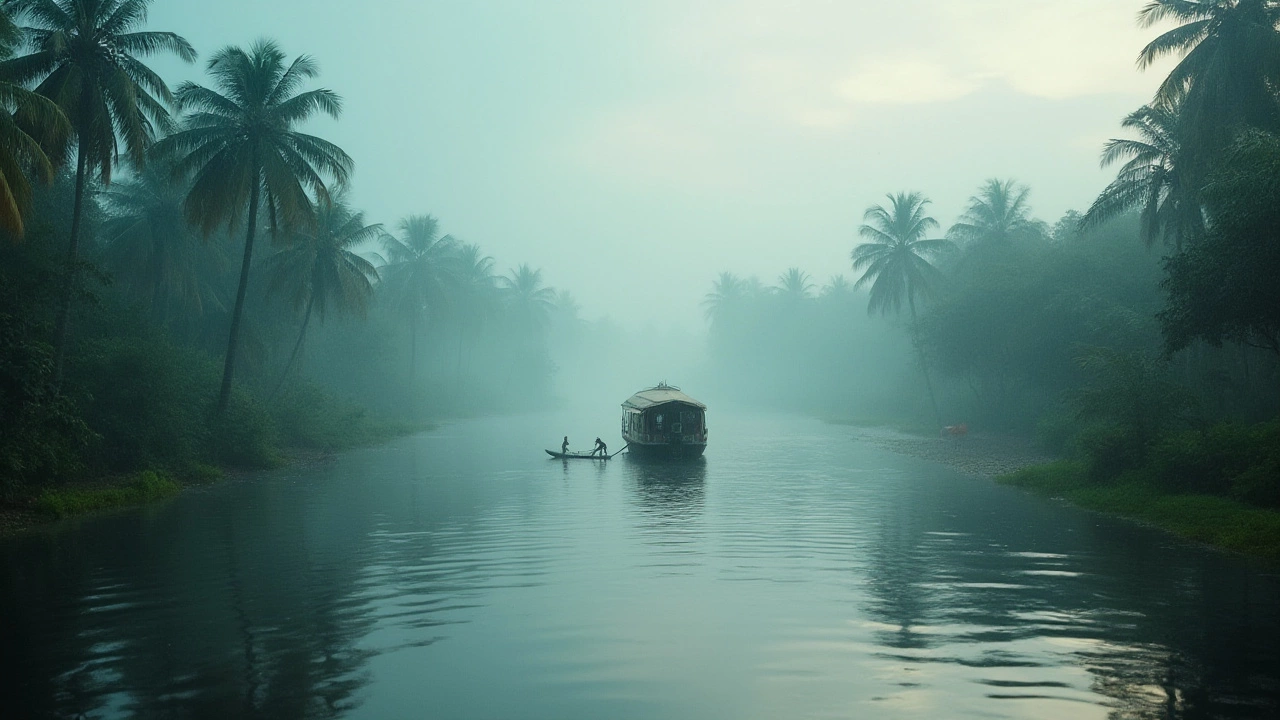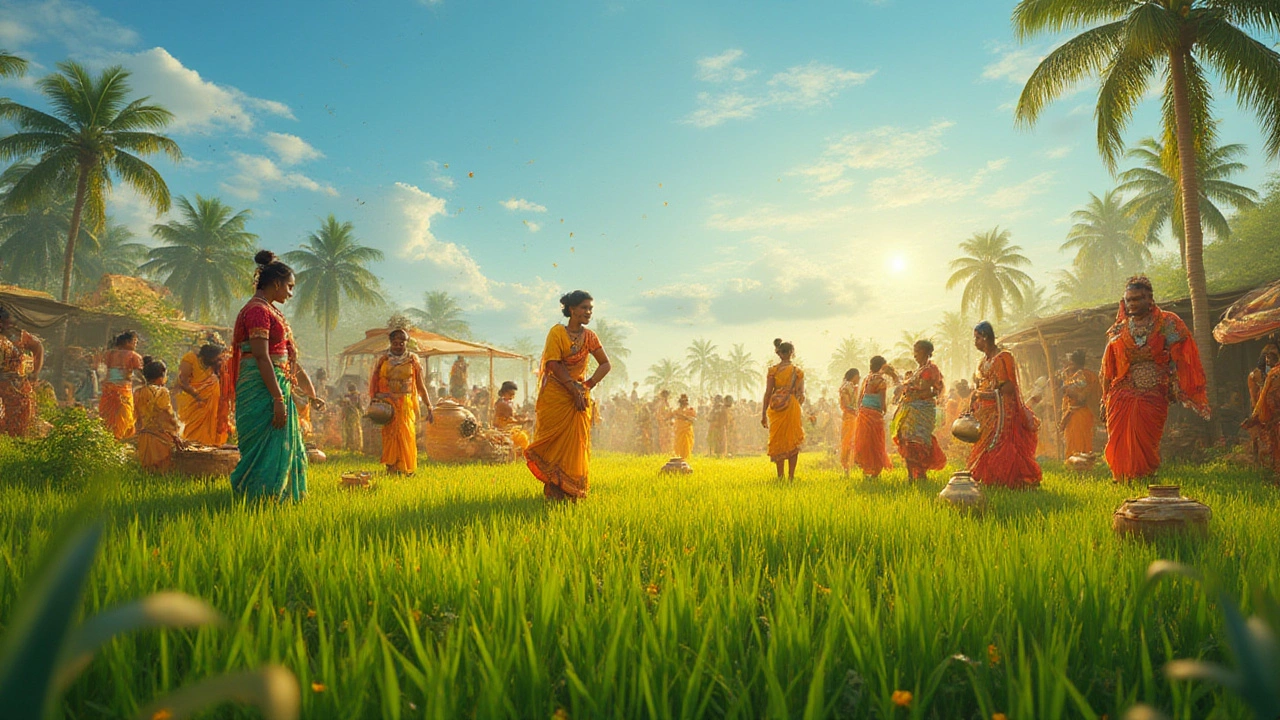Picking the right month for a South Indian adventure can make the trip go from "meh" to magical. One month you’re basking under sapphire skies on palm-lined beaches, the next you’re sidestepping puddles the size of dinner tables because the rains have arrived with a vengeance. But here’s the real kicker: what counts as “best” totally depends on what you want out of your trip. Want to catch jaw-dropping festivals? Prefer sunny, dry weather? Are you out for lush green views, or maybe want to dodge crowds and keep your trip affordable? One thing’s for sure—nothing in Southern India ever stays the same for long.
Understanding Southern India's Weather Patterns
Before choosing the best month to visit, let’s get real about Southern India’s weather. It's a region with wild contrasts. You’ll find the sun-baked beaches of Kerala and Goa, the lush hill stations up in the Western Ghats, and steamy coastal cities like Chennai. The south has three key seasons: the dry winter (roughly November to February), the pre-monsoon summer (March to May), and the monsoon (June to October). Each brings its own flavor—some months serve up balmy breezes, others come with daily downpours that locals greet with a resigned shrug and a fresh cup of chai."
Let’s get granular. Here’s a look at the weather averages across top spots in Southern India, so you know what you’re facing:
| Month | Avg Temp (°C) | Rainfall (mm) | Best for |
|---|---|---|---|
| December-February | 22-32 | 20-60 | Beaches, sightseeing |
| March-May | 27-36 | 20-80 | Hill stations, festivals |
| June-September | 24-31 | 300-900 | Monsoon landscapes |
| October-November | 24-33 | 100-300 | Harvest festivals, eco-travel |
During peak winter, temperatures in places like Munnar or Ooty can dip below 15°C (think chilly but not freezing), but if you’re hugging the coast, you’ll still find yourself in shorts. Come summer, the plains and big cities can feel like walking through hot soup, but that’s when cool hills offer relief. When the monsoon sets in (usually June, sometimes earlier in Kerala), the rain comes fast and hard—sometimes in biblical amounts. Most locals just get on with life in a sea of umbrellas and raincoats.
The winds shift around late September, when the rain starts to ease up. By mid-October, the air feels crisp, the lands are green, and you’ll spot waterfalls jumping down hillsides that looked completely dry just months earlier. Dry season is perfect for exploring temples, hitting the backwaters in Kerala, or just lazing around on the beach. No leeches, fewer puddles, less humidity—what’s not to like?
Month-by-Month Breakdown: When Should You Go?
If you want postcard-perfect weather for sightseeing, December to February usually wins. The temperature sits in that sweet spot—not too hot or humid—especially in the mornings and evenings. Clear blue skies are almost guaranteed across Kerala’s beaches, the temple towns of Tamil Nadu, and the forests of Karnataka. I once spent New Year’s in Kochi when even the locals ditched their fans for a change; it’s that comfortable. Everything just feels more relaxed after the rains have washed away the dust and the cool breezes arrive.
For those who prefer less crowded trails, November and March are underrated. Tourist numbers drop, prices ease off, and you often get weather nearly as pleasant as peak season. March and April start to heat up, and in cities like Chennai or Hyderabad, you’ll feel it. But in the hill towns like Kodaikanal or Wayanad, it’s balmy and uncrowded—ideal if you’re dodging the masses. April is also big on festivals. Temple fairs in Madurai or Thrissur come alive with color, elephants, fireworks, and frenetic drumming. You won’t be bored for a second.
Monsoon (June to September) isn’t for sun-seekers but don’t write it off. The rain brings waterfalls roaring back to life, fills the rivers, and turns paddy fields emerald. Romantic, moody, sometimes a little wild—perfect for nature lovers and photographers or anyone who’s ever wanted to see Kerala’s backwaters at peak green. It’s a gamble: if you’re lucky and catch a break in the rain, you could have places like Goa or Gokarna almost to yourself. That said, sea swimming becomes risky because of the currents, and some remote roads may get washed out for a few days at a time.
October and early November play it somewhere in the middle. The worst rains have gone, but everything’s still lush. This is harvest season—just in time for spectacular holidays like Dussehra and Diwali. Towns across Tamil Nadu and Karnataka light up with decorations, music, and massive community feasts. You’ll see fields being harvested and plenty of local markets buzzing. This is when I’d personally bring my son Linus, if I wanted him to see a genuine slice of southern Indian life outside tourist hotspots.

Festivals and Events: Making Your Visit Unforgettable
Ask anyone who’s spent serious time in Southern India and they’ll tell you: the festivals are as big a draw as the beaches or the food. You could plan a whole trip around them. In February or March (depending on the moon), there’s the blissfully chaotic Festa de Nossa Senhora das Luzes in Goa. March and April bring the famous Thrissur Pooram in Kerala—a riot of elephants, music, and color that’s hard to put into words. If you’re a photographer, or just up for something different, you’ll leave with stories that your friends back home in Bristol will barely believe.
Pongal in Tamil Nadu, held around mid-January, is another must-see. It’s all about harvest, community, and feasting. Locals decorate their homes, cook traditional dishes, and share them with anyone passing by—yes, even scruffy tourists with a backpack and a look of jet lag. For something completely out of the ordinary, the Nehru Trophy Boat Race on Kerala’s Punnamada Lake happens every August. Massive snake boats, wild cheering, and half the town lining the water’s edge—it’s properly epic even if you’re not into rowing.
Here’s a quick look at some key festivals by month, so you can time your visit:
- Pongal (January): Tamil Nadu’s famed harvest festival—music, dance, and sugarcane everywhere.
- Thrissur Pooram (April/May): Kerala’s grand temple festival—expect fireworks, drumming, and elephants decked out in gold.
- Nehru Trophy Boat Race (August): Watch the backwaters come alive in Alleppey.
- Dussehra (October): Mysore lights up with parades, royal processions, and jaw-dropping palace illuminations.
- Diwali (October/November): The festival of lights—lanterns, sweets, and sparklers across the region.
If you want to see the local side of life, don’t skip the small-town fairs and regional festivals either—ask around, and you’ll almost always stumble onto some celebration you didn’t plan for.
Tips for Planning Your Southern India Trip
You don’t want a good trip—you want a truly memorable one. Here’s what I wish someone had told me my first time navigating the south with a kid, an energetic spouse like Claire, and a nosy cat named Felix waiting for us back home in Bristol.
- Book Early for Peak Season: December to February is popular with international and Indian tourists alike. Trains, nice hotels, and backwater houseboats get snapped up fast. If you’re set on this window, lock down your reservations as soon as possible.
- Stay Flexible in the Monsoon: The rains can be both beautiful and unpredictable. Always check road and ferry conditions if you plan to explore remote places. Have a backup plan: museums, cooking classes, or spa treatments if you get rained in for the day.
- Travel Light and Smart: Light, comfortable cotton clothing is a must. A good umbrella or quick-dry raincoat is your best friend outside the dry season. In hill stations, a jumper or fleece keeps you cozy at night.
- Watch The Calendar: Major festivals can clog up traffic and send hotel prices soaring. It’s a thrill to join in, but if crowds aren’t your thing, steer clear or aim for shoulder months when celebrations are smaller but just as authentic.
- Respect the Culture: In temples, shoulders and knees should be covered. Take off your shoes at the entrance, and watch out for cheeky monkeys—especially if you’re juggling snacks for a restless Linus.
- Try Local Food: The best meals often come from no-frills dhabas or roadside stalls. If you’re worried about spice, ask for “less chilly”—locals will get it. And coconut water straight from the shell is the best refresher in the sticky heat.
- Get Travel Insurance: This one’s non-negotiable. Bad tummy, sprained ankle, lost bag—the usual travel hiccups. Coverage is cheap, and it’s the only way to keep things stress-free when plans change quickly.
- Pace Yourself: Distances can be deceiving. Buses and trains are efficient but sometimes slow. Factor in time to chill, especially if you’re hopping between states. Rushing will just leave you tired and cranky.
And if you’re leaving pets behind, like my cat Felix who has a knack for trashing the house if left alone too long, sort out a good sitter. I learned the hard way—no one wants pictures of a toppled-over plant sent mid-trip.
So, what is the best month southern India for you? December through February nails it for most people chasing classic sun-and-sightseeing. October and March are brilliant for beating the crowds—and the heat if you head for the hills. If you’re the type who loves drama, photos, and nature in its wildest form, monsoon season (June to September) serves up magic you won’t find in any travel brochure. Wherever you aim for, plan a bit, stay a little flexible, and leave space for surprises. That’s what makes southern India so addictive—you never really know what’s around the next corner.
